
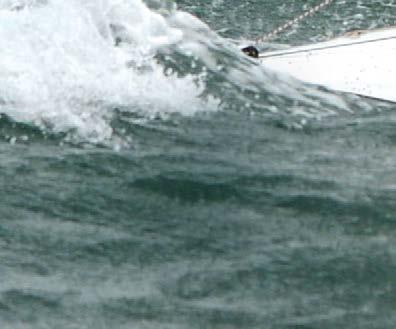
JANUARY 2020 INTERNATIONAL FLYING FIFTEEN
ff World
UKGlobal has provided sailing insurance for over 20 years, developing highly competitive insurance solutions, with enhanced cover and premium benefits.

This has led to the introduction of Craft Cover and Club Cover, our dedicated sailing insurance solutions.
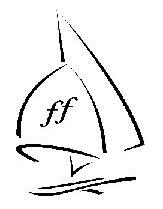

Craft Cover: Specially negotiated rates
£20 off for Members
For more information, please contact:
01883 333 500
fiona.lavery@ukglobalgroup.co.uk
Club Cover: Reduce the overall cost of your club’s insurance programme
Identify and resolve any gaps, ensuring your club has the protection it needs
UKGlobal and UKGlobal Broking Group are trading styles of UKGlobal Risk Solutions Limited. UKGlobal Risk Solutions Limited is authorised and regulated by the Financial Conduct Authority.
Exclusive craft insurance for Members of the UK Flying 15 Association
www.ukglobalgroup.co.uk
Proud sponsors of the Flying 15 Association



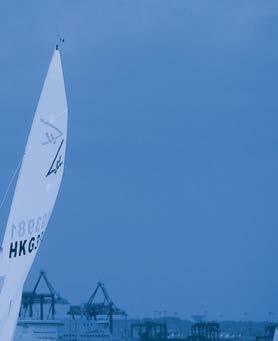

FLYING FIFTEEN WORLD — JANUARY 2020 3 Contents Editor's Comments ..................................................................... 4 Editorial - Hello to UK Flying Fifteeners 6 Ben Scroggie interview .............................................................. 8 UKFFA National Championships 10 Poole Week Report ....................................................................16 The History of the Spanish Flying Fifteen fleet 18 Single-Handed Sailing 22 Website Stories 24 The History of Draycote Water SC 26 Hayling Island Sailing Club Tribute 31
Front cover and above photos by Alan Green
Editor’s Comments
FF World Jan 2020
Another year, another magazine. Nothing changes though; getting articles for this edition was as hard as ever, despite my cajoling people throughout the year to plan ahead and “put pen to paper”.
I hope you enjoy the written content this year, it is what it is, and I am most grateful to those who contributed. I enjoyed reading the article about the start of the F15 fleet in Majorca. Although the magazine is produced out of the UK, we do welcome articles from other countries in the FF world.

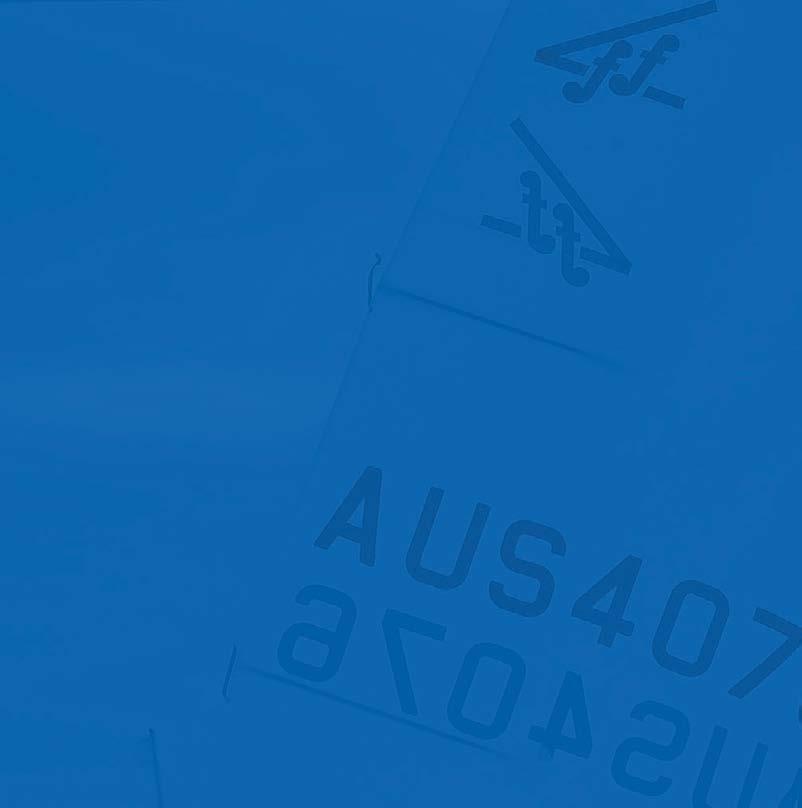
Apart from the Worlds in Dublin the other big event in my life in the Association has been the updating of the two websites I manage for the Association. There is an article about the reasons why we had to do this, also why we choose the Content Management System used in these websites.
As you progress through the 2020 sailing year please bear in mind that you may be doing things of interest to others, like growing your fleet or running a great open meeting. Let us all share the joy of our sport and chosen boat.
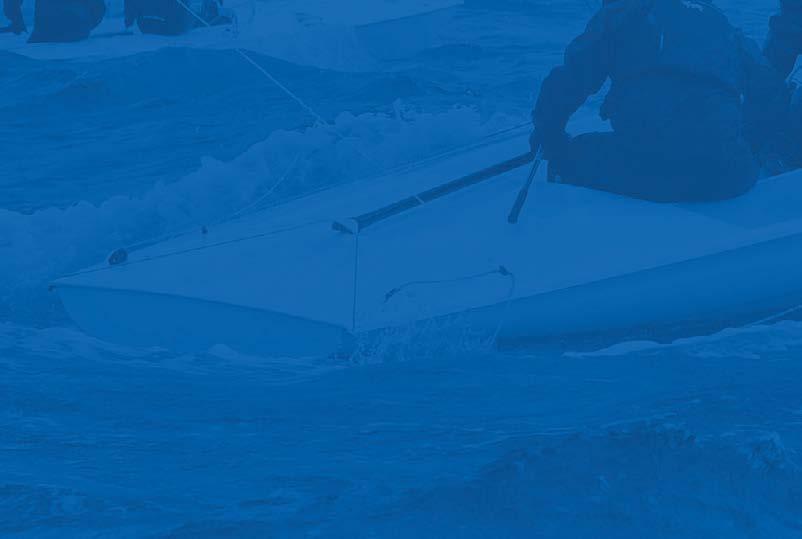

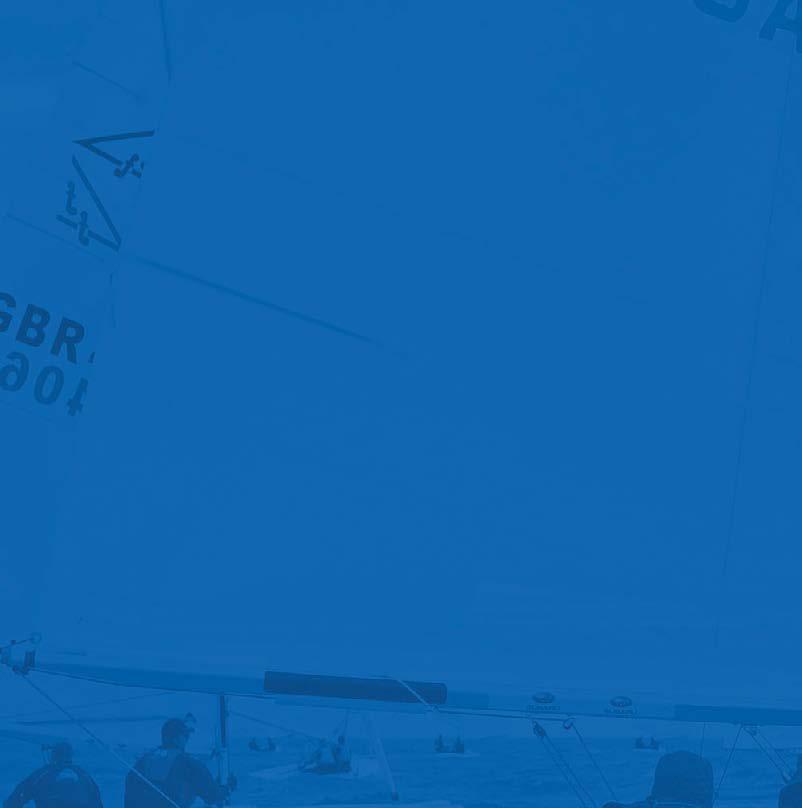
 Simon Thompson GBR 40??
Simon Thompson GBR 40??
FLYING FIFTEEN WORLD — JANUARY 2020 4
FLYING FIFTEEN: Each P&B Flying Fifteen boat is produced under the watchful eye of our resident FF expert, Ian Pinnell, ensuring the highest quality build for every customer. Our Flying Fifteens come with full carbon inner skin as standard giving the competitive edge P&B are renowned for.
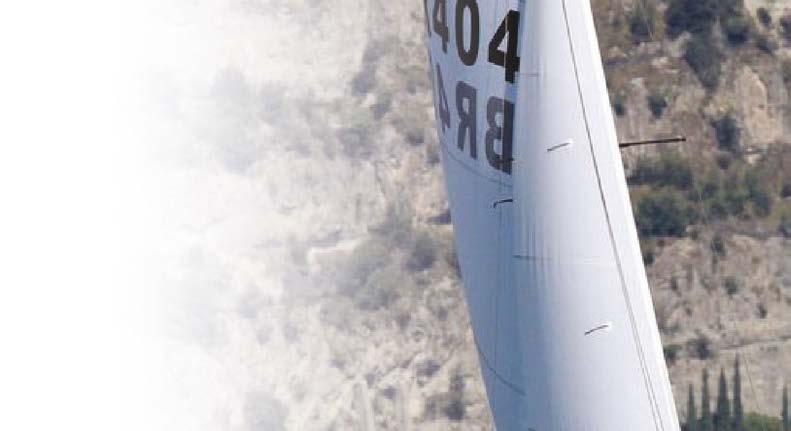
INTERESTED? Contact P&B for your quote. You can also get social by following @pinbax for the latest offers and sailing trends.
UK NATIONALS 2019:
• 1ST, 3RD, 7 TH , 8TH
OVINGTON INLANDS 2019:

• 1ST, 2ND
UK INLANDS 2019:
• 1ST, 3RD, 4TH , 6TH , 8TH , 10TH
WORLDS 2019 RESULTS:
• 1ST, 2ND, 4TH , 8TH , 9TH , 10TH
• 6 OUT OF TOP 10
• 7 SPINNAKERS

PINNELL AND BAX LTD

HEATHFIELD WAY, NORTHAMPTON, NN5 7QP, UK
CALL +44 (0) 1604 592808 • INFO@PINBAX.COM
RIG SPECIALIST: Superspar and Selden dealers, suppliers of the M2, Alto and Epsilon sections.



SOCIAL @PINBAX
GET
Hello UK Flying Fifteeners!



Communication is vital for enhancing the sense of being involved and being part of the Flying Fifteen family – the association recognises that we all have a choice when it comes to sailing and choosing a Flying Fifteen above other fleets is as much about the group of people who sail fifteens, the healthy competitive nature of racing and the camaraderie of those involved – as we suggest ‘the most fun you can have with a keel on’!

King of ‘Comms’, Simon Thompson, ably aided by Jeremy Arnold, launched our new website in the autumn – this will make it easier for those who prefer to access via mobile phone; currently 44% of site visitors.
Secondly, to facilitate ‘Association’ business we have introduced ‘Slack’ as a communication channel and have five sub-channels – Association Business; Championship Events; Fleet Captains; General; Newsletter and have invited those interested to participate – anyone who suffers FOMO (fear of missing out!) by all means contact Keith or Simon for inclusion. This approach has reduced individual emails and speeded up decision making – we sometimes forget that those who help are giving their time freely, and time is something we all lack in our busy lives.



One output has been the newsletter by way of keeping members informed of recent happenings and forthcoming events – whether for the website or the newsletter, we crave action shots of people having fun sailing Fifteens whether at club level or in events, please do forward to Simon. If there is anything you would like to see and read about, likewise do get in touch.
Sailing:- 2020 is a World Qualifier year for those interested in Sailing the worlds in Freemantle, Perth, Western Australia in February 2021 – a fabulous place to sail and party – there is a very active fleet at the nearby South of Perth Yacht Club where Bobby Salmond sails every November – and a lot of fun should be had without too much need of the Freemantle Doctor!
We look forward to visiting Weymouth (Southerns), Morgat (Europeans), Grafham (Inlands), Holy Loch (Scottish), Bassenthwaite (Northerns) and Hayling Island (Nationals).

Meanwhile, and well ahead in the future, UKFFA are supporting Weymouth in their exciting bid to host the worlds in 2023 – the UK has hosted the event twice in the last 30 years, and it would be fun to see the event back on these shores.

FLYING FIFTEEN WORLD — JANUARY 2020 6
The Northern & Southern Traveller Series offers club sailors with a touch of competitive mojo a chance to visit many diff erent waters and sail in diff erent conditions – last year saw the introduction of Traveller series sailing at Aldeburgh, Blackpool & Fleetwood and Ullswater, where local enthusiasm has seen a resurgence in their respective fleets which is great news. These events are as much about the social element as the sailing; the camaraderie off ers up excellent advice to get more fun and success from sailing a Flying Fifteen. The proposed list of events will be issued in Q1 2020 Club Sailing is the most important element of sailing Flying Fifteens – a healthy and enthusiastic team of Fifteeners draws in other sailors – and is the foundation bed for winners at National and World level in the future. UKFFA’s collective focus is on how we can help develop and support local fl eets – the Fleet Captain’s Slack channel provides a good forum to encourage the exchange of ideas.
There are several good starter boats on the market (3700-3900s) for sensible monies (<£9k) and with new boats in build 2020 should be a good year.
Finally, we would like to thank all those involved in supporting UKFFA and respective club fleets – Boat Builders (Ovingtons); Fitter outers (Phil Evans; P&B); Sail providers (Goachers, Hyde Design; P&B).

Do come and see UKFFA at the Dinghy show at Alexandra Palace on Feb 29th/March 1st 2020.

Looking forward to seeing you on the water - Happy Sailing in 2020!







FLYING FIFTEEN WORLD — JANUARY 2020 7
Tim O’Brien 26
Photo by Alan Green
Merlin Rocket ace Richard Whitworth, crewed by
Ben Scroggie,
came second in this year`s UK Nationals
C Richard, people probably think you sailed a Fifteen for the first time this year, but the truth is that you’ve been sailing the boat on and off for a bit, haven’t you?


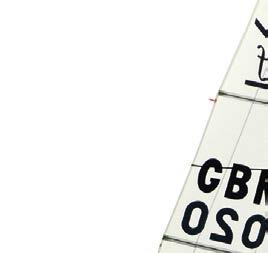






R Yes, I’ve sailed a few times down here at Parkstone Yacht Club, including two or three Poole Weeks with Patrick Keats - we managed to win it a few years ago.
C ...that was mostly as crew...
R ...Yes, I enjoy crewing, and feeding into the boat. I enjoy sailing the Fifteen, I like the way it sort of glides around which gives you slightly diff erent things to think about, with its momentum and turning circle. I went to the 2016 Nationals at Hayling, as you know, and I sailed with my mate Dave - that was bit more of a social week...
C What did you take away from that mostly windy week?
R Probably the same things as I’ve taken from the event this year. Coming from the Merlin, a smaller, more nimble boat, the Fifteen is more about momentum. Then there is the turning circle, so you have to be mindful when you’re tacking that people are going to glide up underneath you, and watch your transom as you’re tacking, because it’s going to kick out. In the lighter conditions which we had at this year’s champs it’s vital to keep the boat going, keep that momentum rolling, and not pinch.
C At what point do you decide to change gear and go for prebend in the light stuff ?
R The shape of the sail, really. We’ve got decent camber lines on the mainsail, as well as the perception I have in my head, and it’s just as the sail starts to look deep, and the camber lines are getting distorted. Then I’m looking either to let the ram off or pull it forward to get a nice smooth shape.
C You sail with North Sails. Have you been involved in the sail shape or is that all designed back at the loft?














R The design guys back at the loft, Rory Scott and Richard Bell, do the design work. I’m not particularly technical myself, but I offer feedback on how it felt and what I was having to do to the sail and they translate that into the design. So, yes, I have been involved in development, probably when we went over from the cross-cut mainsail to the radial main, which holds its shape really well, and gives the sail extra longevity. Since then there have been a few tweaks, such as shortening the top batten to enable a smoother shape and allow it to open up a bit more in the head, but the basic design has remained similar. However,

8 FLYING FIFTEEN WORLD — JANUARY 2020
H E TALKS TO C RISPIN R EAD W ILSON
at Hayling Island we had an extra deep mainsail, and since then we’ve come back halfway to the flatter sail out of the two that we have in the portfolio now.
C So Norths offer two mains, a medium and a flat?
R It’s all subjective, isn’t it? I don’t know how it compares to other mainsails, but we’ve got one that’s flatter and one that’s fuller.
C And the one you used in Poole Bay this year was the flatter one?
R Correct.
C Whereas we used the fuller one of the two P&B mainsails we have. I don’t know which mainsail Graham and Chris used, but I know that Ian Pinnell told me he uses the fuller main all the time.
R Interesting, but it’s difficult to gauge, isn’t it, because it’s all subjective. Unless you get the 3-D shape you can’t even lie it out on the floor to get the luff round very easily...
C Ironically, this year in Poole Bay we were mostly sailing in flat water, so it was pond sailing really, wasn’t it?
R Indeed, which probably suited me!
C What’s your future in the class, or will you keep just dabbling in it?
R Just dabbling, really. I enjoy sailing here on Saturdays and Wednesdays - there’s good competition, even on a Wednesday there’s a decent fleet, so I enjoy doing that, it suits me. I’m still campaigning the Merlin [Richard won Salcombe Merlin Week for the fourth time this year], which occupies most of my time, so it’s trying to fit it all in.
C You spent some time sailing close to Graham Vialls and Chris Turner: did you learn anything from that experience?
R Yes! They’re really good at starting, really good at boat-handling in close quarters. With limited practice opportunities (Ben and I had been out five times before the event) we were all right, but they always had a bit of an edge. One start, there was less than a minute to go, and they were reversing, with the genoa furled still, just to clear the weed off the foils, while everyone else was in full start mode! They’re always on it, and always going in the right direction, but their starts - if you get a clean pair of heels off the start line, you’re difficult to catch.
C What have you carried from the Merlin into the Fifteen? For example, one of the questions I have here is twin poles or single pole?
R I borrowed Graham Scroggie’s boat. Graham and his son Ben are ex-Merlin sailors, and they have set their Fifteen up exactly as they have their Merlin, which was good for me, as I was essentially stepping into a 20ft Merlin! We had some good teamwork, again because we come from similar backgrounds; Ben was really easy to get on with. I do like the twin-pole system for the hoists and gybes. It takes a little bit of setting up and getting used to the technicalities of the
poles and the downhauls, but once it’s set up and working correctly, it’s just so quick to hoist and gybe. If you’re doing anything like the courses in the harbour here, going round the cans, it’s a must, but even on championship courses, if you’re close behind somebody, it’ll just give you that half boat-length. Along with the twin poles, I also think there’s an advantage in chutes. Obviously if it’s choppier conditions, then water over the bow is the only downside. Sailing here in Poole Harbour, it’s not going to be that wavy most of the time, the combination of twin poles and a chute make it easier for the crew to do consistently good hoists and gybes, so you can sail with a greater range of people who may not necessarily be hotshots at crewing.
C Until Vialls and Turner came along, those at the front of the fleet had bags, but now chutes seem to have come back into fashion.
R Bags require forward thinking - dropping windward or leeward mid race, setting it up before the first beat.
C Any moments that will stick in the memory from this year’s championship?
R Nice fleet, welcoming people, enjoyed sailing off Bournemouth. We were drifting out to one of the races - it might even have been the one that we won - the beautiful Scottish boat Vamoose with wooden decks, came gliding past us on the way out, which didn’t do my head any good at all: we had to re-check all our settings! It was lovely to see it sailing so well, but not at that moment.
C That will make Bobby Salmond’s day! Finally, the new jibany thoughts?
R It seems to have encouraged people to experiment with their rigs a bit more, coming to an understanding rather than just following the trends. There are people with floating blocks and barber-haulers to try and make the most of it. The fleet obviously wanted a change.
C Last question: when it’s over 20kts, what advice do you have on sail trimming?
R Look at the mainsail, to see if there’s any backwinding. If there is, flatten the mainsail off. Think about the slot and what’s happening there. The foresail is all about sheet tension and car position; I’d probably be moving the car aft, and probably easing the sheet tension a little in gusts to open up the slot to let the excess wind through.
C Final thoughts?
R I really enjoy sailing the Fifteen. I’m not particularly bothered whether I’m at the front or the back of the boat. It’s a lovely fleet here at Parkstone, fantastic water to sail on a regular basis. I hope to continue sailing in the boat and doing the odd event.
C Thank you!
FLYING FIFTEEN WORLD — JANUARY 2020 9

supported by u K G lobal 24 – 27 JULY 2019 FLYING FIFTEEN WORLD — JANUARY 2020 10
UKFFA National Championships
It had been 5 years since the Nationals were last held at Parkstone Yacht Club when the fleet enjoyed a windy four days and the championships were won with a day to spare by Graham Vials and Chris Turner. What would 2019 bring?

The day before the sailing started dawned hot and sunny for the registration and sail stamping. Some keen competitors went out for a practice sail.
The 47 boats entered were looking forward to four days of racing in Poole bay with competitors from around the country including Scotland, Blackpool, the Lake District, many of the central lakes and the South Coast. There was also a competitor from Durban in South Africa practicing for the World Championships. The largest contingent was from the home club with 16 boats taking part.
The entry list included World Champions, National Champions and regular club sailors.




The weather gods were kind for the Mar-Key Group race day with two races planned and Bryan Drake and his team set windward leeward courses for both races.


Graham Vials and Chris Turner, in their new boat 4071, stamped their authority on the fl eet and took the lead in both races to be the lead the championships over-night, was it going to be a rerun of 2014?
Local boats 4020 Richard Whitworth and Ben Scroggie and 4052 David Tabb and Chewy Sherrell were second and third, respectively in the first race and in the second race 4030 Greg Wells and Andrew Jameson and 3994 the father son team of Chris and Tom Waples were second and third.
The crews returned for the daily prizegiving and social sponsored by Magic Marine and Ringwood Brewery. In true Parkstone style there were several raffle prizes kindly given by Magic Marine and other one-off prizes given by P&B, Goacher Sails, Selden and Ovington Boats.
For the Bournemouth Digital race day, three races were scheduled on what was expected to be the hottest day of the year. By the time the fleet had arrived on the racecourse the light breeze was fading and swinging by anything from 110 to 150 degrees. After a delay the race officer managed to start race 3 and the local boats managed to take advantage of the big right-hand shift. 4020 Richard Whitworth and Ben Scroggie held their advantage winning race three followed by 4052 David Tabb and Chewy Sherrell. The rest of the top five, 4002 Richard Lovering and Matt Alverado, 3793 Pete and Jo Allam and 3875 Brett Dingwall and Tim Scarisbrick all had their best results of the championship so far.
The race officer managed to get a second race away under a U flag. With the breeze fading the race was only one lap and again the local boats prevailed with 4054 Simon Spolton and Grant Murphy holding off 4052 David Tabb and Chewy Sherrell to win. The podium was completed by another local boat 3914 Tattersall and Popper. 4033 Justin Waples and Jackie McKellar finished fourth with 4071 Graham Vials and Chris Turner finishing 5th. Campbell Alexander and Jeremy Kriek from South Africa in their new boat 4009 finished sixth.
The race officer abandoned any more racing and the fleet were towed ashore to be greeted by the team offering chocolate and tea for the crews de-tallying before heading to the bar for beer and lager put on by Ringwood Brewery and the Magic Marine daily prize giving. The competitors then enjoyed a four-course championship dinner sponsored by UK Global in the club house and an opportunity to enjoy the first of the Poole Quay summer fireworks.
At the halfway stage 4052 David Tabb and Chewy Sherrell led the regatta by one point from 4020 Richard Whitworth and Ben Scroggie leading 4071 Graham Vials and Chris Turner by another point.
In a change to the normal format the UKFFA AGM was held on the Friday morning prior to the Hyde Sails race day, with four races scheduled, and the competitors arrived to enjoy the breakfast and coffee options put on by the club before attending the AGM.
The fleet then took to the water for what was looking like another tricky tactical day on the water. The first race got away just after noon under the U flag which caught out regatta leaders 4052
FLYING FIFTEEN WORLD — JANUARY 2020 11
Photo by Ian Roman
David Tabb and Chewey Sherrell. Ironically the breakaway leader was 4002 Richard Lovering and Matt Alvarado from race day sponsor Hyde Sails who managed to lead around the three-lap course to take a comfortable win from 4070 Nathan Batchelor and Richard Riggs. 4030 Greg Wells and Andrew Jameson came third followed by local team 4020 Richard Whitworth and Ben Scroggie in fourth and 4071 Graham Vials and Chris Turner were fifth.
Race 2 of the day saw the wind dropping and a new race leader led the race at the first mark 4060 Ian Pinnell and Jeremy Wise closely followed by birthday boy 3793 Pete Allam with his wife Jo. The short leg from the gate to the finish line turned into a three-way 100m dash. In a cruel act of fate, the wind shifted, and race leader 3793 Pete and Jo Allam snatched defeat from the jaws of victory having to tack to clear the finish boat and




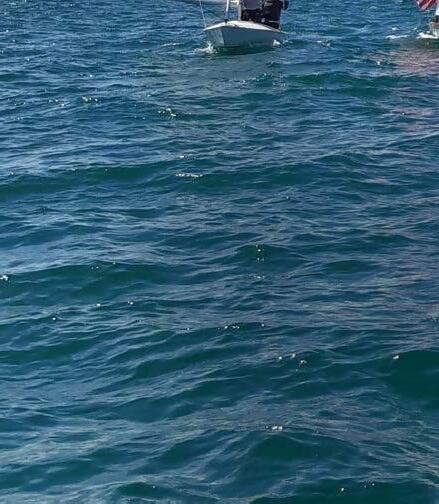
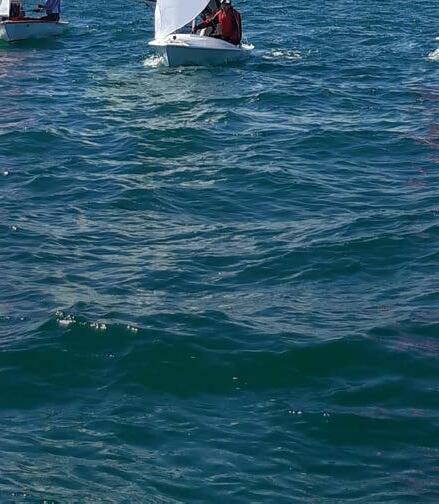
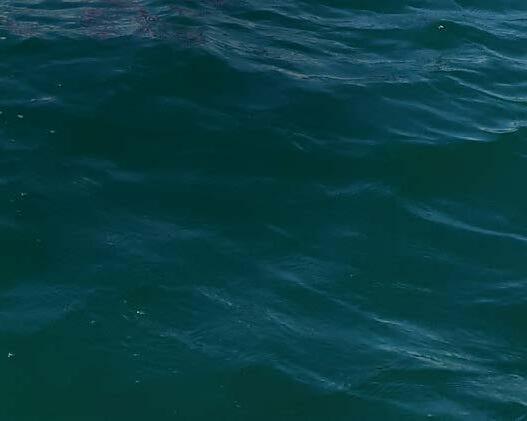


losing four places. 4060 Ian Pinnell and Jeremy Wise took the gun followed by 4020 Richard Whitworth and Ben Scroggie, 4033 Justin Waples and Jackie McKellar and 4071 Graham Vials and Chris Turner.
The start of race 3 saw four boats chanced a port tack flyer. Local boat and class stalwart 3922 Crispin Read Wilson and Steve Brown were one of those who proudly port tacked the entire fleet to lead lap 1 from 4061 Mark Weston and Andrew Weatherspoon. 3922 Crispin Read Wilson and Steve Brown held onto the lead on lap 2 taking their first bullet of the championship. Working their way through the fleet 4055 Ian Cadwallader and Steve Graham took second and 4033 Justin Waples and Jackie McKellar took another third of the day. Local boat 3914 Adrian Tattersall and Richard Popper took fourth ahead of 4071 Graham Vials and Chris Turner.

 Above and opposite photos by Ian Roman
Above and opposite photos by Ian Roman
FLYING FIFTEEN WORLD — JANUARY 2020 12
Main photo by Emily Hackforth
The short leg from the gate to the finish line turned into a three-way 100m dash. In a cruel act of fate, the wind shifted and race leader 3793 Pete and Jo Allam snatched defeat from the jaws of victory, having to tack to clear the finish boat and losing four places.



“ ” FLYING FIFTEEN WORLD — JANUARY 2020 13
The fourth race saw 4071 Graham Vials and Chris Turner return to form to lead the race and take a third first of the championship. 4030 Gregg Wells and Andrew Jameson were second and for the first time during the championship European Champions 4059 Hamish Mackay and Andrew Lawson took their first podium of the championships. 3953 Robert Hogben and Noel West took fourth, their best result of the championship and 4055 Ian Cadwallader and Steve Graham were fifth.
The fleet returned to the club for the daily prizegiving and social sponsored by Magic Marine and Ringwood Brewery. With Hyde Sails as day sponsor, they had given a voucher for a new Spinnaker which was presented to Sue Bannister, the only lady helm at the championship, on 3736.
With two races left Graham Vials and Chris Turner went into the last day seven points ahead of local team Richard Whitworth and Ben Scroggie.
The final day dawned with warm sunny skies and a gentle North Westerly to provide another tricky day racing. Graham Vials and Chris Turner were on form on the final day winning the last two races in some style sealing the Championship.
Race 9 got away after one false start and Graham Vials and Chris Turner were not the only team back on form. 4021 Steve Goacher and Tim Harper had their first podium of the regatta followed by 4002 Richard Lovering and Matt Alvarado. Local boat 4020 Richard Whitworth and Ben Scroggie finished in a close fourth with 3957 Charles Apthorp and Alan Green getting their best result in fifth.
The final race of the championship took three attempts to start with wind shifts and a couple of recalls. 4021 Steve Goacher and Tim Harper popped out in the lead and held it throughout lap 1. Graham Vials and Chris Turner were breathing down their neck and they edged into the lead during lap 3. They cruised across the line to take their fifth first of the regatta. 4070 Nathan Batchelor and Richard Riggs managed to snatch second place from 4030 Greg Wells and Andrew Jameson with 4021 Steve Goacher and Tim Harper in fourth and 4059 Hamish Mackay and Andrew Lawson in fifth.
The fleet returned to the Club to pack up and enjoy afternoon tea and the overall prizegiving.

What a regatta with 6 race winners, 15 teams achieving a podium result and two local boats in the top three. Although a trickier regatta wind wise than hoped the sun shone and Parkstone Yacht Club looked after the competitors in style with a friendly welcome and socials every day.
The Classic Championship was won by Bobby Salmond and his crew Will Morris, who as the youngest competitor also won the Ovington Dryrobe, in 627.
The Ladies trophy was won by Jackie McKellar crewing for Justin Waples on 4033.


We look forward to the 2020 National Championships to be held at Hayling Island Sailing Club, 30 July – 2 August.

 Photo by Ian Roman
Photo by Ian Roman
Photo by Ian Roman
Photo by Ian Roman
FLYING FIFTEEN WORLD — JANUARY 2020 14
Photo by Christina Moncur
HAND MADE IN BRITAIN
We have thoroughly enjoyed supporting the Flying Fi een eet throughout 2019 along with sending 2 ‘Ovington works teams’ to the Worlds in Ireland.
Moving into 2020 we are also looking to o er basic t hulls ready for DIY home t out, as well as complete rigged, ready to race boats.
Ovington Boats Ltd




Tanners Bank
North Shields
Tyne & Wear
NE30 1JH
Great Britain
ese boats will incorporate ideas and feedback learnt in tting GBR 4070 for Nathan Batchelor and Richard Rigg (2019 Irish National Champions) and GBR 4071 Graham Vials and Chris Turner (2019 UK and 2019 World Champions).
For more information on pricing and availability, contact : Nathan.Batchelor@ovingtonboats.co.uk
THE OVINGTON F15 www.ovingtonboats.co.uk
Contact us on: Phone: 0191 2576011 Email: Info@ovingtonboats.co.uk
P le W k Report P le W k Report

With the Nationals been held at home the Parkstone fleet were backing their reputation and stayed at home, although 14 local boats along with 2 visitors turned out for Bournemouth Digital Poole Week.
A six-day event held annually in August with 2 races a day scheduled in the afternoons and various socials organised for the fleet.
The forecast was for a windy start to the regatta and dropping as the week went on.



As promised first day was breezy, and not the fine summer day hoped for and the crews turned up for the competitors briefing to be told that the race officers had already decided that they would only run one race using fixed marks rather than laid mark so a harbour tour was on. All the entered boats decided to head out to committee boat to enjoy the boisterous conditions. Bob Alexander and Huw Willetts showed the fleet the way on 3537, followed by Patrick Keats and Chris Jermyn on 3821 and visitor Ian Linder and Kevin Sweetman on 3851.
The fleet returned to the Club for the Poole Week curry evening and discussions of broaches and whether the wind would reduce for the following day.
The weather forecast was promising less wind for day two, but competitors were greeted to another windy day. As the platform was showing gusts of 28 knots it was decided that the fleets that were starting on the platform would not race. The race officer of the committee boat decided that it should be business as usual and the fifteens, lasers, RS200s and RS400s ventured out for a beat to the committee boat start line. A windward/leeward course was set for the fifteen fleet and it was a close battle at the front of the fleet with Sunday’s winners Bob Alexander and Huw Willetts on 3537 having a tussle with Chris Gorringe and Nadia Hosie on 4025 for the front. Chris and Nadia managed a tidier rounding at the bottom mark and held the inside and hold the advantage on the short beat to the finish. Patrick Keats and Chris Jermyn on 3821 managed their second podium of the week finishing third. After the first race the race officer sent the fleet home to enjoy a debrief from the coaches that had been following the fleet, Annie
Lush and Niall Myant -Best. This was followed by a Pimm’s party very kindly hosted by Vanessa and Peter Dobson at their house just around the corner from the club. The weather was kind and it was a good chance for the fleet to socialise with the other keelboat class at the regatta, X one designs, and enjoy the Dobson’s lovely view of the harbour!
On Tuesday the wind had dropped and the sun came out, giving the fleet a classic day’s racing in Poole Harbour. Bob Alexander and Huw Willetts were back at the front and won both races. The first race was a triangle sausage course and there were new boats taking the podium positions with Simon Redhead and Mike Riley on 3916 in taking second and Mervyn Wright and Ron Elliott on 3904 in third. The second race was a harbour tour where Graham Davies and Claire Greeno on 3934 in second and after a frustrating result in the first race of the day Patrick Keats and Chris Jermyn returned to the podium on 3821.
The fabulous conditions of Tuesday continued into Wednesday afternoon and the fleet enjoyed two triangle sausage courses in top triangle. It was close racing at the front of the fleet in both races. Bob Alexander and Huw Willetts on 3537 continued their top form with a win in the first race and a second place in the second. Graham Davies and Homfray Vine on 3934 continued their form of Tuesday with a second in the first race and for the with their best result of the regatta so far Dick Linford and Peter Biggs came third. The second race saw visitors Ian Linder and Kevin Sweetman 3851 back on top with a win and Patrick Keats and Chris Jermyn return to the podium in third. The socials continued with Dick and Fi Linford hosting a drinks party on their cruiser in the marina.
For the penultimate days racing the fleet enjoyed yet more champagne sailing. The race officer decided to give the fleet three races with two triangle sausage courses and a harbour tour to bring the fleet home. Once again Bob Alexander and Huw Willetts
FLYING FIFTEEN WORLD — JANUARY 2020 16
showed their winning form with three wins sealing up the regatta with a day to spare. Once again it was close racing within the fleet and two more boats took podium spots with Adrian Tattersall and Richard Popper on 3914 taking third in race one and second in race three. In race two Geof Gibbons and Dave Hoy had their best result of the regatta with a third. Chris Gorringe and Nadia Hosie on 4025 having had a few frustrating results were back at the front in the first and third races with a second and third respectively. Graham Davies and Homfray Vine got their third second place of the week in the second race of the day. The fleet returned to the club with stories to tell and to enjoy their class dinner at the club.
The race officer set a triangle sausage and a harbour tour for the last day of racing on a day that saw the wind drop leaving tricky conditions for the fleet. Bob Alexander and Huw Willetts took the day off sailing and enjoyed the sunshine, giving the rest of the fleet a chance at the front of the fleet. Christina and Stephen Moncur on 3850 took advantage in the first race having a close battle with Ian Linder and Kevin Sweetman on 3851 before finally taking the lead at the final mark to win. Steve and Lisa Randle on 4019 had their best result of the week taking third. The last race saw yet another new winner with father and daughter team Stewart and Jade Bowen on 3715 winning followed by Mervyn Wright and Ron Elliot on 3904 in second and Chris Gorringe and Nadia Hosie on 4025 in third.
It had been a week of contrast, but the fleet had enjoyed tight racing and some excellent socials. We look forward to next year with Poole Week taking place from Sunday 23 – Friday 28 August.



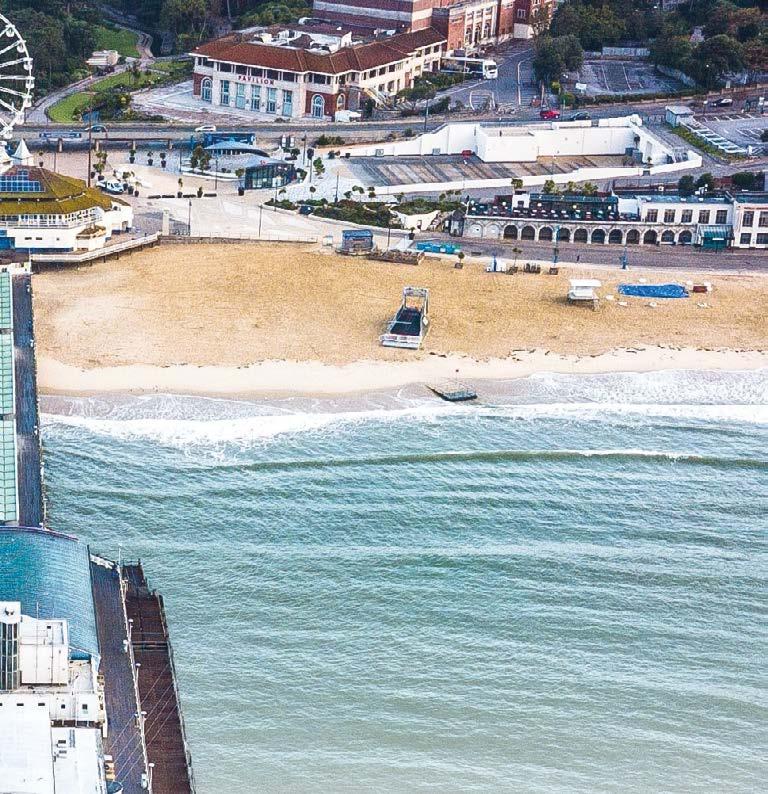 written by Christina Moncur
written by Christina Moncur




FLYING FIFTEEN WORLD — JANUARY 2020 17
“On Tuesday the wind had dropped and the sun came out, giving the fleet a classic day’s racing in Poole Harbour.”
THE HISTORY OF the Spanish Flying Fifteen fleet, Puerto Pollensa, Mallorca

In 1988 I came to work for the lovable pirate Brian Livingston Builder, at Livingston’s Yacht Brokers, delighted to be dealing with boats and over the moon about living in Puerto Pollensa in sunny Mallorca.
Even though the newly constructed RCNPP ‘Real Club Nautica Puerto Pollensa’ promised plenty of moorings, hard standing and launching facilities, there was very little evidence of dinghy or for that matter any sailboat racing.




I asked Brian, as he was one of the club committee members, if there was any chance of dinghy racing attached to the club, to which he replied, ‘well just organize it’.
So having spoken with Pepper Constable (ff2666) (Puerto Pollensa’s first Flying Fifteen fleet captain), John Leaf (ff2877), Mark Manning (ff1650), Mike Brown (ff ?) and myself (ff2597) ascertaining how much each were prepared to spend on their boats, we decided to purchase classic Flying Fifteens. i.e. less than 3,000 sail number. I went to London boat show for work in January of 1991 and bought our fifteens on the telephone, offering to pay the asking price as long as the owners were prepared to trail their boats to Swanage in Dorset, where my good friend Chris Haw had offered to house the boats in his garden until such time we could build the wooden cradles required and remove keels etc, to be able to pack up to 6 boats in a 40 ft container. Finally, Ian Royse bought his boat (ff2500) and arranged to join the others in Swanage so completing the full load.
Nick Crutchfield built the wooden supports for the hulls and removed the keels and Chris laid on a barrel of beer for the Swanage lifeboat crew to help load the boats, keels and trailers etc all into the container. My dear Mother helped us all immensely by labelling every item of each boat and their sail bags with their respective sail numbers, hence avoiding embarrassing squabbles when the boats did finally arrived in Puerto.
So the wonderful day eventually came when we became acquainted with our boats, and thanked the previous owners for their integrity and wholeheartedness, if only with our thoughts. We had a fleet of 6 sailable fifteens in Pollensa bay and very happy bunnies we all were.
I was later informed that Uffa Fox had tried sometime in the late 50s early 60s to import 2 Flying Fifteens into Mallorca and they were both confiscated by Customs and never seen again.
We wet sailed our boats, moored next to the military base, being ferried out to them by Mark Manning from ‘Picnic Boats’, who said he would keep an eye on them as he was down there every day with his day boat rental business.

All went swimmingly; we would race twice a week, Wednesday evening and Saturday afternoon. Rabbit starts (gate starts) avoided the need for any committee boat or personnel for starting and we chose mooring buoys or even moored boats as our marks of the course. The important thing was that we were out sailing and racing in our own little way, sometimes doing up to 4 short races in an afternoon. The 3rd placed finisher was automatically the next rabbit. I seem to remember beating towards the windward mark, (moored boat), on several occasions only to find that it had upped anchor and was off before we could get to it. But it was just so much fun to be sailing in warm waters with balmy breezes.
At about this time, I fi nished working for Livingston’s and set up on my own as ‘Wilson Yachts, maintenance, sales and service, renting a small offi ce in the high street in Puerto, with my wife, Helena and 6 month old daughter Annie supporting me.
One bright mid-morning the lovely Felipe Bellini (at that time President of the World Boardsailing Association, Juror and committee member of the Spanish National Sailing Federation and ex RCNPP president) walked into my office
FLYING FIFTEEN WORLD — JANUARY 2020 18
and asked, ‘Hugh, what is happening with the Flying Fifteens?’ To which I answered that I had written to the Club Nautico asking if there was anything that they could do for our fleet, and that their reply was that they were not interested in Flying Fifteens as they were not an Olympic class and in any case they didn’t like the tone of my letter! So Felipe asked if I could let him have copies of the letter that I had written to the club and their reply, which I gave him, he read them, snorted, and said ‘How dare they! Leave these with me, I’m off to Madrid for a committee meeting in two weeks time and the Real Club Nautico Puerto Pollensa will be hearing from the Spanish National Sailing Federation’———!

A little while later we were invited by the Club to let them know what we needed, and after initially launching our boats from the ramp beside the travel lift and storing the boats next to the Marina worker’s office, we were then later offered our own hard standing area over on the other side of the marina entrance where the fuel quay is, with our own crane, water for wash downs and electricity for any repair work that we needed to do. They apologized that we would have to drive around from the fuel quay to the shower rooms within the club as they could not see any way of building showers for us where we were!
Eternally grateful, Thank you Felipe.
Interest in Flying Fifteens grew; Michael Clough appeared one day and said he was moving from the UK to live in Palma, so I glibly told him to forget the idea if he didn’t bring a Flying Fifteen when he came. A couple of months later and there was another 15. Another container arrived with 6 more and the class just got stronger.
We became more organized and became members of Flying Fifteen International, sending our yearly fixtures and regatta results to be included in the magazine. We elected officers for basic functions and there followed a bright and very happy time. My brother Andrew also arrived towing a fifteen -Rebecca (2950).



Soon after came our first team racing event, with the ‘Pollensa Olive Trophy’ sponsored by Derek and Chrissie Walker, as the prize for the winning team, racing against the Royal Motor Yacht Club in Poole, principally due to our friendship with David Kenyon, a keen Flying Fifteener from there. Their team arrived, were guests in our homes and we had a week of great sailing, while wives and sweethearts were able to go to the beach or wander around the beautiful streets of old Pollensa town. At the final farewell dinner their team Captain threw down the gauntlet and challenged us to visit them in Poole the next year, so they could have their revenge! We visited them, had a marvellous time and were entertained royally, but they never got their revenge.
The team racing event escalated and the next event in Puerto Pollensa was with 5 clubs participating, Poole, Northern Ireland, Chew Valley Sailing Club, Derwent Water and Puerto Pollensa. The racing was furious and the logistics also. Round robin, every team against every other, each changing boat after the first race so that each team would sail both yellow flag boats and blue flag boats. The thought of protest meetings after the day’s racing was just not on, as we were expecting to do more than a dozen races each day, and there was no chance of being able to remember on which leg of which race that a particular incident had occurred! So ‘on the water’ judging
FLYING FIFTEEN WORLD — JANUARY 2020 19
was instigated with three team members from each of the teams that weren’t racing, driving three rubber ducks doing the job. The rubber ducks also aided the changing of boats and teams.
It was a magic week, Felipe Bellini was committee boat officer and Judge, everyone had great fun and Puerto Pollensa finally prevailed against Northern Ireland in the final. Puerto Pollensa’s ‘Dream Team’ had done it again.
There followed another team racing event, which reportedly wasn’t quite as smooth as the previous ones had been, it was not so popular with those that lent their boats for the event, as some visiting crews didn’t treat the boats with the due care that they deserved, resulting in quite serious damage to one boat in particular.
Soon after this the fleet members opened the previous limitation on sail numbers, allowing people to purchase new boats if they so wished. There naturally followed a period of discontent as those that had bought cheaper old classics, were now precluded from winning races, against much faster newer hull shapes, resulting in vastly reduced fleets for normal weekend racing. At one moment there was even some doubt if the fleet would survive.
In 2004 the RCNPP hosted the first ever European Championship with great success, and in 2007 the Worlds. Very popular with the visiting crews, who enjoyed the warm water sailing and found the hot sandy beaches a great option for other family members whilst the racing was on, this turned Puerto Pollensa into a favoured venue for future events. RCNPP’s second Europeans came in 2010.

Each year the fleet competes at ‘Palma Vela’, a meeting held in the early part of the season, the boats being trailed down to Palma for the event.



Regular racing continues right through the year and many regattas are sailed with the cruiser division of the club, making fun and friendly prize giving events with cocktails and eats at the RCNPP.
Of the original 6 owners whose boats arrived in the first container, only 1 still has a boat and actively competes, John Leaf a mere 78 years old. Well done John. It was a really great pleasure to be able to present John with the Hugh Wilson Trophy this summer.
I don’t think that anyone expected the fleet to grow in the way that it has, we just wanted to be able to go sailing and have some fun ! While writing this we have heard of two more boats changing hands in the last weeks, to new sailors to our group, long live Flying Fifteen Pollensa.
WRITTEN BY HUGH WILSON
Hugh now lives in Brazil and has done for the last 19 years. This summer 2019 he returned to Mallorca with his family, to visit friends and enjoy some wonderful Flying Fifteen sailing, including the Balearic Championship, where he sailed with his son Christopher, and his daughter Annie sailed with the current fleet Captain Michael Beecken.
FLYING FIFTEEN WORLD — JANUARY 2020 20
FLYING FIFTEEN HYDE SAILS - CONSISTENT WINNERS
Over the past 5 years Hyde sails has been on the podium at the Flying Fifteen UK championship, winning two of them in 2015 & 2017 and runners up in the others. Wins at opens and area events over the past seasons represent a consistent performance by any standard.

If you are after performance without the price tag and to know you have the backing and involvement of a truly international company give us a call. For the latest design information and the most competitive prices contact;
Richard Lovering +44(0)7802 315903 richardlovering@hydesails.co.uk
Dave Hall +44(0)7525 271500 davehall@hydesails.co.uk

Jack Grogan +44(0)7525 178908 jackgrogan@hydesails.co.uk
 photograph by J. Fullerton
photograph by J. Fullerton
MAKING SAILS THE WAY YOU WAN T
Single-Handed Sailing or It’s Easier Than Chopping Shallots


I’ve been promising this one for a while but never really got down to writing it, this is partly because I often have the thought that no one would be interested in such a personal article, and partly because I’m not the sort of person to draw attention to disabilities [hate that word].
The intention is, however, to provide a little insight into how to sail a flying fifteen with one useable hand, the other doesn’t work (at all) and the arm to which it is attached doesn’t do that much either. The article has been inspired by my friends and compatriots from the fleet who keep asking “how do you do that?” Also, Simon kept asking for an article so here we go. If you get bored before the end please move on to more illuminating pieces in the publication.
I’ve always sailed, ever since I can remember I’ve been around boats; The earliest memories are at Loch Earn in Perthshire with my family. If memory serves, the classes of choice at the club were Hornets, Enterprises and, of course, Flying Fifteens. I guess our family have sailed them all at one time or another, I think my Uncle even had a dalliance with an OK, but Flying Fifteens were and still are the boat of choice. I’m sure I could dig out a picture of me in one age 5 complete with hand knitted, by my grandmother of course, an arran sweater just like the one my grandfather used to wear.
It’s been a lifelong love affair with the Flying Fifteen, though there have been brief sojourns into other classes, of course, and as a lad the Mirror (home built by Uncle Roddy) was compulsory. It was during a one of those brief respites away from sailing that it happened: age 20, "didn’t see you gov" would be the usual excuse. The injury for those of you that are interested is a Traumatic Brachial Plexus Lesion or BPL, basically mobility remains as I mentioned.
So, to the sailing and a return, like many as the career developed to fund it, and of course back to the Flying Fifteen. This was 2001 and the boat, funnily enough, was 1117 a Chippendale hull originally owned by my grandfather. As for many coming into the fleet, classic boats were a great route in at the time. Competitive sailing, boats at reasonable prices, friendly bunch of sailors, and travelling competition. At the time of writing I’m four boats in, the last three being more up-to-date and a journey I’m sure many will be familiar with. The journey has probably changed now as we have moved on and I’ve certainly noticed new entrants getting straight into competitive racing with reasonably priced middle-aged boats; it’s the way forward and a real testament to the design and the builders.
FLYING FIFTEEN WORLD — JANUARY 2020 22
How to do the sailing then. Nothing fancy to start with, never been big on adaptions, I need to jump in what’s standard, helps with second-hand values as well. Helming is surprisingly easy but needed me to put some added beef in my right arm (the one that works), a slightly longer tiller extension helps too, especially on starboard tack. Hand over hand sheeting is a bit difficult, make that impossible, so a handy quick crew helps with leeward mark rounding. A spinnaker chute is not so good, really the hand over hand is needed there too, so spinnaker bags with a pump action handles hoists, drops well that’s the crew’s job! It does all get a bit leery in big fleet starts and similarly tight mark rounding but for club and small opens not so bad.
As a result, for bigger events I’m doing more crewing, not as difficult as it might appear, up wind, well that’s great. I’ve had to work on the strength a bit, but the new jib helps greatly, I’ve never really been a gripper so all those sit ups pay off handsomely. I’d recommend a hiking bench for the really committed, but the long beats at the nationals really give a good work out.
As for down wind, well, that’s a whole different ball game, I’ve sailed double-ended pole with bags and chute. I’ve been crewing more recently on the circuit last year and at the worlds with my mate Jeremy [Arnold] who has a twin pole set up with lazy guys. This is a great advance and is spreading in the fleet, makes setting easier in a big breeze and we are seeing more and more boats going for this. To play the sheet or guy I have made one concession to disability: I’ve screwed a cleat to my left arm, no amateur prosthetic surgery but attached to a wrist brace. It really depends which gybe we're on which is used where, but we’re improving the downwind pace a lot.



On my own boat I’ve got a variant on a single-ended pole system that I copied from Dave Lucas, which is really working well and gets away from poles flying back into ones’ face – yes we had that too and a trip to casualty. I managed not to get any blood in the McKee’s Discovery, and they tried ever so hard not to laugh in Oldham casualty, “we don’t get many stories like that here sir,” “sure you haven’t been drinking?”.
I’ve been crewing with spinnaker bags as well; the drops are a little difficult but I’m getting better and faster. As with any sport, lots of practice is a good thing and that’s the key to it really, work out a system that is good and repeat, repeat, repeat, until you can do it in your sleep or in 20 knots with a big sea running. A double-ended pole can be a challenge, but I’ve even found my own unconventional workarounds there as well. It can be quick but needs more practice, I’d say.
The best thing, though, about sailing with one hand, especially in this fleet, is everyone else I sail with that helps the most. No judgements, no opinions, no helplessness, no attitude, just get on with it. A general assumption that if help is needed, I’ll ask, if not I won’t but still a friendly helpful attitude. It might surprise some that the biggest drawback is in my own head, “why would people bother wanting to sail with me,” but they do, and that Dear Reader is the best bit. No questions asked, just jump in the boat and go sailing, the true level playing field. There are plenty folk in this world that could take some lessons from the Flying Fifteen fleet on getting rid of stigma.
In that vein, I’d really like to end by paying tribute to all those who have sailed with me and made it all possible, a Flying Fifteen is a double-handed boat after all. If I’ve forgotten someone I apologise now and in no particular order: Maf Smith, Pierre Labatt, Justin Waples, Jeremy Arnold, Nigel Tullett, David Heron, Gavin Tullett, Graham Tullett, Mark Wilson, Peter Brown, Adam Cowley, Adrian Simpson, Carol Drury, Frank Kelly, Phil Snewin, Keith Jones, Nathan Batchelor, John Thornley, Mark Holmes, Richard (Corky) Rigg, Steve Goacher, Phil Evans, Patrick Condy, Tim O’Brien, Simon Millington & Dave Hemingway.
Oh yes and Flying Fifteen sailing... Well, it's still easier than chopping shallots, but there is an awful lot of sailing still to do!
written by Keith Jamieson
FLYING FIFTEEN WORLD — JANUARY 2020 23
Website stories
Autumn 2019 was memorable for me as I realised the time had come to update the two fleet websites I manage for the association; the UK one – flying15.org.uk and the Worldwide one – flying15.org.


This article explains why this was necessary in both non-technical and technical terms, why this had to happen and the issues to be addressed along the way.
History of the Associations Websites
Th e UK website was conceived and developed in 2012 in partnership with my predecessor as Publicity officer, Richard Jones from Datchet SC. It may be difficult to remember that far back, but the associations website at that time was tightly controlled and it proved so hard to get new content onto it that Richard started the Flying 15 Blog site (for both Datchet SC and the rest of the UK) so as to have somewhere to post up to date news.
The new 2012 website was finally launched in early 2013 just as Google decided that mobile friendly websites were the preferred solution. The 2012 website was not mobile friendly! In 2018 we undertook a small piece of work to improve that situation, but it was just tinkering at the edges and I knew a full rebuild was required at some stage.
The final driver that meant the site needed to be update was the decision by Google to retire some of the web browser technologies the 2012 site used (such as Flash). Some of those older technologies also meant we could not keep the Content Management System (CMS) up to the latest specifications, therefore it was imperative something was done.
The FFI website came about after the 2015 worlds in France. I was asked by Peter Rooke (FFI President) what I could do to rescue that website from a similar situation to that we had found the UK website in; a problem in getting new and updated content onto the site.
We also had a problem in that the flying15.org domain name was under the management of someone in the UK who had not let the Australian builder of the previous site use that domain. You may remember F15international.com as the web address. Well I managed to resolve that issue whilst we were building the new FFI website and hence the site you saw until this autumn which visually was pretty much the same as the previous one.
24 FLYING FIFTEEN WORLD JANUARY 2020
.
The work this Autumn
In order to produce websites with a rejuvenated look and feel, modern technological components and content that worked across all sizes of screen took a lot of work. Across the two websites it occupied my time for the bulk of the working day over 8 weeks. Not commercially affordable by the Association, which is why it is good I am now retired!
Selecting the graphical look and feel and technology ended up with me using the products of a team in Croatia whose range of technology all works together, and also gave me import tools so that we could easily migrate older news items across to the new website.
Having completed the move then I produced training videos for the various actions required by other Editors on the website; such as creating a Boats for Sale advert, Updating the Fixture Lists, and How to Edit Sailwave Results tables so they are accessible on mobile devices!
What technology is used
For those of a non-technical disposition, please now move onto the next article!!
The Content Management System (CMS) we use is called DNN (formerly DotNetNuke). This is based on Microsoft .net technology. I have been working with this technology since 2006 and it has matured into a very user friendly and highly configurable platform. It is also highly secure and is a platform of choice for those requiring such features such as major corporate and government organisations.
It is also an Open Source product, meaning we can use it for free! There is a very helpful community of developers around this technology. You can see this at work at www. dnncommunity.org.
Choosing the correct hosting company (we use Managed; www.managed.com) also means that a base level of technical support comes with our subscription. I also use Cloudflare as a Content Distribution Network (www.cloudflare.com). This service ensures that wherever in the world you access the website from you get a quick response and it also protects the websites from attack. I suggest you look at their website to learn the whole story.
Because of the way DNN is constructed content layout decisions are always very fluid and can even be changed after the launch of the website. This separation of content and layout is one that was built into the product from the start and it has proved to be a major strength of the product.
If you wish to discuss more about why we chose this product rather then other well-known CMS platforms such as WordPress then I am always happy to have a chat over the phone or in the bar after sailing.
If you would like support on developing your own website for your sailing group, then just ask. I am already supporting Flying 15 France in such a project.

 Simon Thompson Flying15 Webmaster
Simon Thompson Flying15 Webmaster
25 FLYING FIFTEEN WORLD JANUARY 2020
Draycote Water Sailing Club is a members’ club. We are a friendly bunch and are always ready to welcome new members.

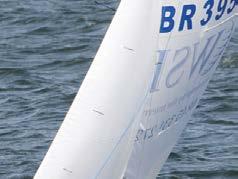

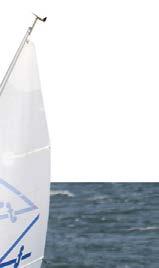


The club is open 364 days a year for dinghy sailing and windsurfing. Class racing is held on Sundays throughout the year and on Wednesday evenings through the summer.
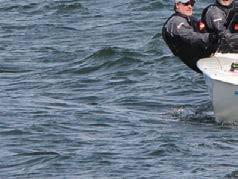
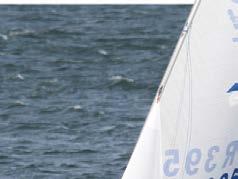
The club is an RYA recognised training centre offering a wide variety of professionally run courses from April to October. Rescue services operate whenever the water is open.
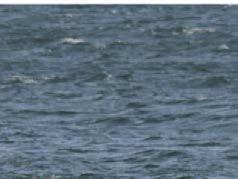
Draycote Water is a 650-acre (260 hectares) reservoir set high in the rolling Warwickshire countryside, with good access from M1, M6, M45 and M40 motorways. Th e water is roughly 1 km North South and 2 km East West. Enough room for open meetings and club racing to take place at the same time.
The clubhouse is large and well equipped, with lounge/bar, catered wet-bar, chandlery and changing rooms. After sailing, our members can relax in comfort with WiFi internet access and AV facilities in the lounge.
History
Draycote reservoir was constructed in the mid-1960s under the direction of Rugby Corporation Water Department.
A small group of people led by Sir Charles Barratt had the vision of a sailing club on the reservoir and in 1968 called for a meeting of interested people by public notice in the local Press to be held in the Rugby Benn Memorial Hall.
Bearing that there was little water in the reservoir at that time the response was overwhelming which encouraged those founder members to approach Rugby Water Board and negotiate a lease which resulted in Draycote Water Sailing Club coming into being in 1969. The lease was conditional, and the Club had to commit to a variety of works and site development to confirm the long-term intent to base a sailing club on the site.
Before there was even enough water to launch a boat, the Club had 1,200 members and the list was closed to new entrants. Sailing first took place on the Whitsun Bank Holiday in 1969. From then on the Club was open for sailing and racing on Saturdays and Sundays as well as Wednesday evenings. By the following year, a variety of boats were being sailed, including the Mirror, GP14, Enterprise, Fireball, Finn, Merlin Rocket, Lark and Kestrel. Other fleets were added in subsequent years: Flying Fifteens in 1972, International OK in 1973, Lasers and Wayfarers in 1975, and in 1977, Solos and 505s.
Tragically, Sir Charles Barratt did not live to see the opening of the clubhouse, dying after a short illness on 10 February 1971, aged 60. The clubhouse was officially opened by Lady Barratt on 26 June that year and the inaugural Sir Charles Barratt Memorial Trophy race was held that day. Lady Barratt remained a stalwart supporter of the club and appears in many club photographs presenting club trophies.
Pumping of water began in October 1969 and, 12 months later members were being advised to move their boats above the rising waterline.

The history of Draycote Water SC and of its Flying Fifteen fleet

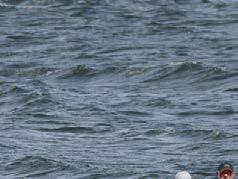
FLYING FIFTEEN WORLD — JANUARY 2020 26
Sir Charles Barratt was Town Clerk of Coventry and was a major force in the rebuilding of the city after the Second World War, for which he was knighted. He was a leading force in giving Coventry a university, the University of Warwick which opened in 1965. He was also closely involved with the Coventry School of Music and the Sir Charles Barratt Memorial Foundation still helps fund the studies of young musicians.
The Nathan Silver Salvers
The single most important event in the Draycote sailing calendar, and which probably did more than any other in establishing the Club’s national reputation, was the annual Nathan Silver Salvers which started in 1975 and continued till 1999. Other sponsors, including Severn Trent, Laser and AutoCIM, took over from Nathans, a Birmingham jewellers, after 1985, after which it became known as the Draycote Silver Salver.
Each class association around the country was invited to send two of its top competitors to the race, a 200-minute pursuit, with Draycote also able to enter two from each of its home classes. There were consistently more than 120 boats sailing, the highest number, 160, recorded in 1998, when entry was opened to four boats from each class.



Regularly as many as 30 National champions, as well as World and European champions and at least one Olympic silver medallist (Keith Musto in the Flying Dutchman) took part. It became a major spectator sport locally as well, with up to 700 spectators gathering on the banks.
Winning boats came from a wide range of classes over the years, including 420, 470, Flying Dutchman, International Moth, International 14, 505, Fireball and even Toppers(twice). Winners received a Rolex Oyster watch!
The Flying Fifteens at Draycote
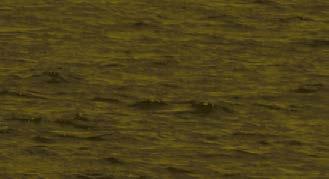


Currently the Flying Fifteen fleet can boast amongst its members past World and National champions, with several crews currently competing at National and International level with a considerable degree of success.
The growth and enduring nature of the fleet can be, in part, attributed to dry berthing on a concrete hard and easy launching and recovery against a floating pontoon which is easily moved to accommodate changes in water level. But this has not always been the case.
Early Days
The only concrete slipway at DWSC that can accommodate the needs of a Fifteen belongs to the Water Authority, the Clubs landlord, and is outside but on the edge of the Clubs grounds.
27
This slipway has a gentle gradient and is long enough to allow launching and recovery at any water level and is conveniently situated at the most sheltered corner of the reservoir. In the early years of the Club a group of potential Fifteen owners, through the club committee, approached the landlord for permission to use this slipway which was granted but for limited use. The slip could only be used to access moorings which had to be provided by the Club. Moorings were laid and the DWSC Flying Fifteen fleet came into being.
The first Fifteens at DWSC had sail numbers in the 1400s, “Flamenco Magic” 1446” springs to mind, and by the mid-1970s sail numbers at DWSC were in the 1800s with a number of Wyche and Coppocks being bought, one of which being 1848 “Shaft”. Shafts owner had a wry sense of humour naming the dinghy in which he rowed out to the moorings “Half Shaft”. A few short comings of being on moorings soon became evident, one of which was that boats soon had to be anti-fouled which in turn impacted on performance. Another was lack of adequate buoyancy. What was a sheltered mooring in the prevailing south westerlies in those days became anything but, in a strong northerly wind. After a gale, owners often arrived at the club to find boats barely afloat with not enough freeboard to board them without water coming in over the deck faster than it could be bailed out. Boats had to be bailed out from a dinghy alongside. Inadequate buoyancy was also a problem after a knock down while racing and “Shaft” was once recovered by a safety boat with only the bow above water.


By the late 1970s the problems associated with being on moorings, antifouling and swamping encouraged an approach to the landlord who gave permission for the Water Authority slip to be used by the Flying Fifteens on a regular basis. Concrete hards were laid, boats were dry berthed and wet launched. This brought a new surge of enthusiasm in the fleet and boats were stripped of their anti-fouling, polished, upgraded or changed in the pursuit of better club and open meeting results. “Big Broffer”, sail number 1984 hit the water followed by “Blue Broffer”, sail number 2448 two years later. However, these were to be the last new Wyche and Coppocks bought by a club member.
During the early 1980s the fleet members added to the concrete hards, widened the Water Board slip within the club boundary and built a fixed pier from scaffolding and scaffold planks. This pier provided for dry launching and recovery but could become high and dry during lower water levels. With this more comfortable arrangement the first Windebank IV, sail number 2744 was bought by a fleet member, followed by another member buying the first Amos, sail number 2922, and then a third buying a Windebank V 3083, which prompted a renewed surge for a winning performance.
In 1984 a core of club members from the GP14 fleet transferred to the Flying Fifteens and several Wyche and Coppocks, 1984,1847and 1903 and a Vectis Marine, 1446, were resurrected by them. It was inevitable that these venerable Fifteens were not going to get anywhere near the Windebank’s and Amos boats and after some of the races dark mutterings were heard of burning boats on the slipway.
With the growing fleet the concrete hards were extended and improved and the fixed pier was dismantled to be replaced by a floating pontoon that was a DIY project and fabricated by a fleet member. This pontoon could be moved in and out following a changing water level. Made from several short narrow sections, constructed from angle iron with buoyancy provide by empty oil drums it was very twitchy in rough weather and demanded considerable balancing skills from those using it.
FLYING FIFTEEN WORLD — JANUARY 2020 28
The ex-GP group persevered but over the next couple of years either bought later and quicker boats from other fleet members as they upgraded to the latest Ovington IX or bought a new boat. By 1989/90 the competitive fleet consisted almost wholly of Windebank IVs, Vs, IXs and Xs, Amos Fifteens based on the Windebank mould and a few Ovington IXs. Of the Ovington IXs 3292 was setting the pace at the club. The Wyche and Coppocks had had their day at the club, either being retired or relegated to cruising.
The 1990s onwards
The Ovington IX and IX “smoothy” reigned supreme at the club during the 1990s and fleet members were making their mark internationally and nationally. Funny Face, 3292, won the Worlds in 1992 and in 1997 the same owner sailing 3573 came 2nd in the Worlds, 1st in the Southern Championships and 2nd in the Inlands. The year before in 1996 year another DWSC crew in 3564 came 3rd in both the nationals and Northerns. Such was the level of competition at the club during this period these crews did not have it all their own way.
During the early 2000s the fleet replaced the twitchy homebuilt pontoon with a professionally built one which is substantial, stable and easily moved. The Club Committee negotiated the use of the Water Boards slipway to be written into a renewed Club lease, so its use was no longer a grace and favour arrangement thus providing the Fifteen fleet with greater confidence. The first Ovington X made its appearance at the club during 2002 and promptly set a new standard in performance which caused other fleet members to reach for their wallets or arrange a meeting with the bank manager. That first Ovington X, 3760, still proves to be virtually unbeatable with a string of international and national successes. The helm and crew (Jeremy Davy and Martin Huett) might have something to do with it!
The Flying Fifteen fleet moves into 2020 having played a substantial part of the Clubs 50 years promoting the Clubs name in the UK, Europe and World competition. Although the active fleet cannot match the numbers competing in club racing during the heady days of the 1980s and 90s there are eight Ovington Xs, a couple of Ovington IX smoothies and a Benedict to be seen on the start line and a new Ovington X being fitted out for the new 2020 season.
Members are already planning to attend many of the Association Championship events and there will be a contingent of 5 going to Morgat in France for the 202 European Championships.
If you live in the Midlands and your club does not sail in the winter, Draycote Water offers Winter Membership from November to end of March. There is fleet racing at 11am and 1:15pm every Sunday.




Why not come and join us for some competitive racing and keep your team in top form ready for the new sailing season in 2021!
Written by Harry Sayers, and contributions from Simon Thompson (GBR407?),
with early history from the club website.
www.draycotewater.co.uk
FLYING FIFTEEN WORLD — JANUARY 2020 29
Fixture Highlights
2020 2021
March 18th - 21st New Zealand National Championships Onerahi YC, Northland
April 18th - 19th Royal Windermere Open Royal Windermere YC
May 2nd - 3rd Bulwark Trophy Hayling Island SC
May 16th - 17th UK Southern Area Championships WPSNA

May 21st - 23rd French National & European Championships Crozon-Morgat, Brittany
June 6th - 7th Inland Championships Grafham Water SC
June 20th - 21st Scottish Championships Holy Loch SC
July 4th - 5th Northern Championships Bassenthwaite SC
July 30th - August 2nd UK National Championships Hayling Island SC
August 8th - 15th Cowes Week Cowes, Isle of Wight
August 23rd - 28th Poole Week Parkstone YC
February 5th - 9th World Championships Fremantle, Perth
FLYING FIFTEEN WORLD — JANUARY 2020 30
Hayling Island Sailing Club pay tribute to the continued sailing succe es of Roger and Barbara Palmer


On 20th October 2019, 40 fleet members & family from Hayling Island Sailing Club gathered together for an end of season Flying Fifteen’s lunch, featuring a fitting tribute to the continued sailing successes of Roger and Barbara Palmer.


By the time Roger left for Cambridge, he was a sailing instructor and quickly became involved with the university sailing scene. It is here that Roger utilised his skills and charm whilst teaching Barbara to sail. Their friendship blossomed with Roger bagging himself a wife and crew at the same time, a team that has been a proven success to this day.
With the shift from the Fireball, the idea of possibly sailing a keelboat and competing at Cowes might have lured them in the Flying Fifteen! Geoffrey, his brother recalled when he towed Four Leaf Clover (2748) over to Cowes behind his Contessa.
This is where Roger and Barbara took Cowes by storm going on to win Cowes Week, their success continued for 3 consecutive times. Even then Barbara slightness and skill shone out her fellow competitors as she was to become (1987 – at HISC) the first ladies crew or helm winning the Dimple trophy in 2748 at the Nationals for the first time and she continues today to hold the record for having held on this trophy the most.
Roger once again won at Cowes Week with Keith Gardner in 3615, and William Roger’s nephew in 1998; by then the house was full of trophies.
Internationally he competed both in southern Hemisphere Worlds Championships in Durban South Africa, then again in Esperance in Western Australia.
At Hayling, Roger soon got known as the ‘Cunning Fox’, gained his nickname early on in sailing, for his canny ability to navigate the most trickiest of conditions in and out the harbour to go on to win countless amount of races and regattas. It is believed single-handily Roger and Barbara’s collection of “The Federation” plates would have enough for all attendees on the day to hold a Greek party and still a few left to smash later!
Th ey went from strength to strength with Barbara behind the scene helping Roger in his term of being commodore at the club before he set into a more International role as a lead Principal Race Officer and International Juror, during which period Barbara escorted and supported him across the Globe, and played a key role in the RYA for many years. Roger has made a major contribution to the FF Class. In 1996-1996 was appointed National president of the association and was later Commodore of Flying Fifteen International between 1999 and 2002, with Barbara being Secretary of the Association at the same time.
written by Sue Bannister
FLYING FIFTEEN WORLD — JANUARY 2020 31
Roger and Barbara Palmer with Sue and Fran Bayliss

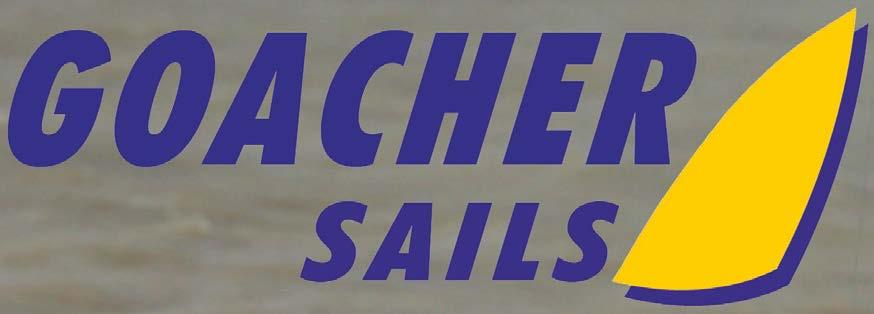
30 years of success and counting... • Sails • Covers • Accessories • Advice 6 World Championships 5 European Championships 16 UK National Championships Contact us today: Phone: +44 (0)15394 88686 Email: loft@goachersails.co.uk Website: www.goachersails.co.uk Designed for performance, built to last















 Simon Thompson GBR 40??
Simon Thompson GBR 40??































































 Above and opposite photos by Ian Roman
Above and opposite photos by Ian Roman







 Photo by Ian Roman
Photo by Ian Roman
Photo by Ian Roman
Photo by Ian Roman











 written by Christina Moncur
written by Christina Moncur




















 photograph by J. Fullerton
photograph by J. Fullerton








 Simon Thompson Flying15 Webmaster
Simon Thompson Flying15 Webmaster






























